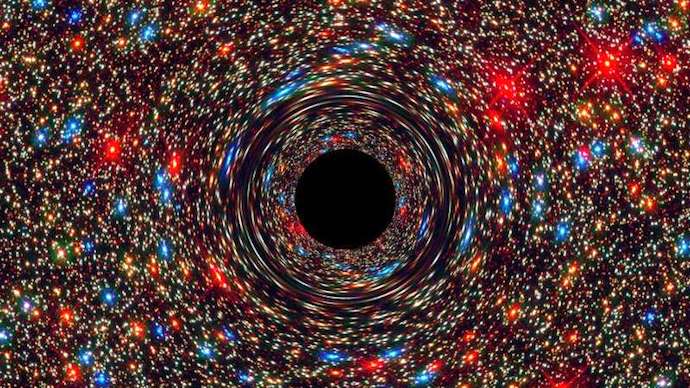Ultramassive black holes some 3.5 billion light-years away from Earth have been discovered with the help of NASA’s Chandra X-ray telescope.
The so-called “ultramassive” voids are, according to the team’s calculations, growing faster than the stars in their respective galaxies.
“A black hole is an invisible celestial object whose gravitational pull is so strong that neither matter nor light can escape it,” Julie Hlavacek-Larrondo, a physics professor at the University of Montreal, said in a statement. “It swallows everything in its path like a bottomless vortex.”
In their search for black holes, Hlavacek-Larrondo and co-author Mar Mezcua, a postdoctoral fellow at the Institute of Space Sciences in Spain, studied 72 galaxies at the center of the universe’s “brightest and most massive galaxy clusters.”
“A black hole is most often created when a massive star dies and collapses on itself,” Hlavacek-Larrondo explained. “The most fascinating thing about black holes is how they distort time around them. According to Einstein’s theory of relativity, time flows more slowly in strong gravitational fields, like those of these gargantuan celestial objects.”
By analyzing radio wave and X-ray emissions, astronomers found that ultramassive black holes are roughly ten times heavier than previously calculated.
Plus, almost half of the sample set is estimated to be at least 10 billion times bigger than Earth’s sun.
“We have discovered black holes that are far larger and way more massive than anticipated,” Mezcua said.
“Are they so big because they had a head start or because certain ideal conditions allowed them to grow more rapidly over billions of years?” she wondered. “For the moment, there is no way for us to know.”
As exciting as this discovery is, it also reveals dangerous implications for galaxies housing these ultramassive black holes.
With great mass comes great power: The “celestial behemoth” sucks in the matter then flings it back out in streams strong enough to destroy its host galaxy.
“It would be like a mini, galaxy-sized Big Bang,” Hlavacek-Larrondo said.
“But there’s no need to worry about our own galaxy,” she confirmed. “Sagittarius A*, the Milky Way’s supermassive black hole, is a bit boring. It’s not very active, much like a dormant volcano. It sucks up little matter and probably wouldn’t be able to produce destructive high-energy jets.”















